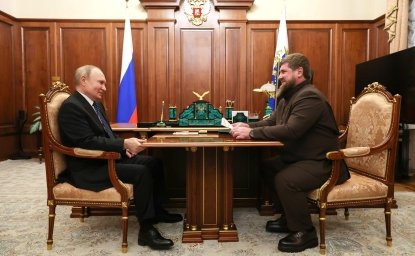George Kennan (1845-1924) played a most important role in the development of American attitudes towards Russia in the late nineteenth century, and continued to mold those attitudes through World War I. His deep interest in the Russian nation and people began in 1865 when he joined an expedition to survey a telegraph cable route through Russia to Europe. Two and a half years later, word reached the expedition that the transatlantic cable had been successfully laid and that they were out of business. Kennan turned this failure into personal success by writing of his experiences in a book, Tent Life in Siberia.
While this book brought him some notoriety as an expert on the Russian Empire in the United States, it did not bring him material success. He went on to launch a career as journalist for the new Associated Press. Throughout a career spanning nearly sixty years, Kennan wrote on a broad range of issues, including American politics, the Spanish-American War, the Russo-Japanese War and a great deal more, in newspapers, magazines and books. His reputation was such that his by-line could bring attention to any subject.
Although he wrote on countless subjects, he became especially known for his knowledge of the Russian Empire. During his life, his books and articles on Russian subjects were widely read. In an era prior to television and radio, Kennan was in constant demand as a speaker. His most popular talks focused on his adventures in Siberia, the peoples of Russia, and, later on, the evils of the Tsarist exile system.
These talks were based on his experiences from two major trips to the Russian Empire. After his first expedition, his talks and writings played a major role in informing Americans about the Russian Empire in general. Kennan returned for his second major trip to Russia in 1885, sponsored by one of America's most popular journals at the time, The Century. On this trip, Kennan was convinced of the evils of the tsarist exile system and upon returning began his passionate criticisms of the tsarist government. Because of his expertise, ability, and passion, he kept the question of Russian-American relations in the public eye.
Not only did Kennan have the respect of the American people; his knowledge of Russian and his scholarly approach to issues brought him respect from a wide variety of Russians as well. Kennan's writings also brought him the enmity of the Russian government. When Kennan tried to return to Russia again in 1901, he was arrested and expelled as "politically untrustworthy."
Kennan continued to write and speak about Russia from the sidelines, calling for constitutional reforms and the end of autocracy. When Tsar Nicholas II abdicated in March 1917, it appeared for some months that democracy might take root. When the Bolsheviks seized power in November later that year, Kennan soon found himself denouncing the return of authoritarianism to Russia.
Kennan died in 1924, the same year as Bolshevik leader Vladimir Lenin. Although some academics today dispute his merits as a scholar, his influence on how America viewed Russia is indisputable. He was an explorer, journalist, scholar, a tireless investigator, and this nation's first great expert on Russia and the Russian people.
See also:
George Kennan the Elder's writings:
Tent Life in Siberia (1870)
Siberia and the Exile System (2 vols. 1891)
"George Kennan and the Challenge of Siberia," by Nicholas Daniloff (Demokratizatsia, Fall 1999)
"George Kennan and the Russian Empire: How America's Conscience Became an Enemy of Tsarism," by Helen Hundley (Kennan Institute Occasional Paper)

Kennan Institute
After more than 50 years as a vital part of the Wilson Center legacy, the Kennan Institute has become an independent think tank. You can find the current website for the Kennan Institute at kennaninstitute.org. Please look for future announcements about partnership activities between the Wilson Center and the Kennan Institute at Wilson Center Press Room. The Kennan Institute is the premier US center for advanced research on Eurasia and the oldest and largest regional program at the Woodrow Wilson International Center for Scholars. The Kennan Institute is committed to improving American understanding of Russia, Ukraine, Central Asia, the South Caucasus, and the surrounding region through research and exchange. Read more

Explore More
Browse Insights & Analysis
US Inaction Is Ceding the Global Nuclear Market to China and Russia

Infographic | Russia's Illegal Annexation of Crimea

